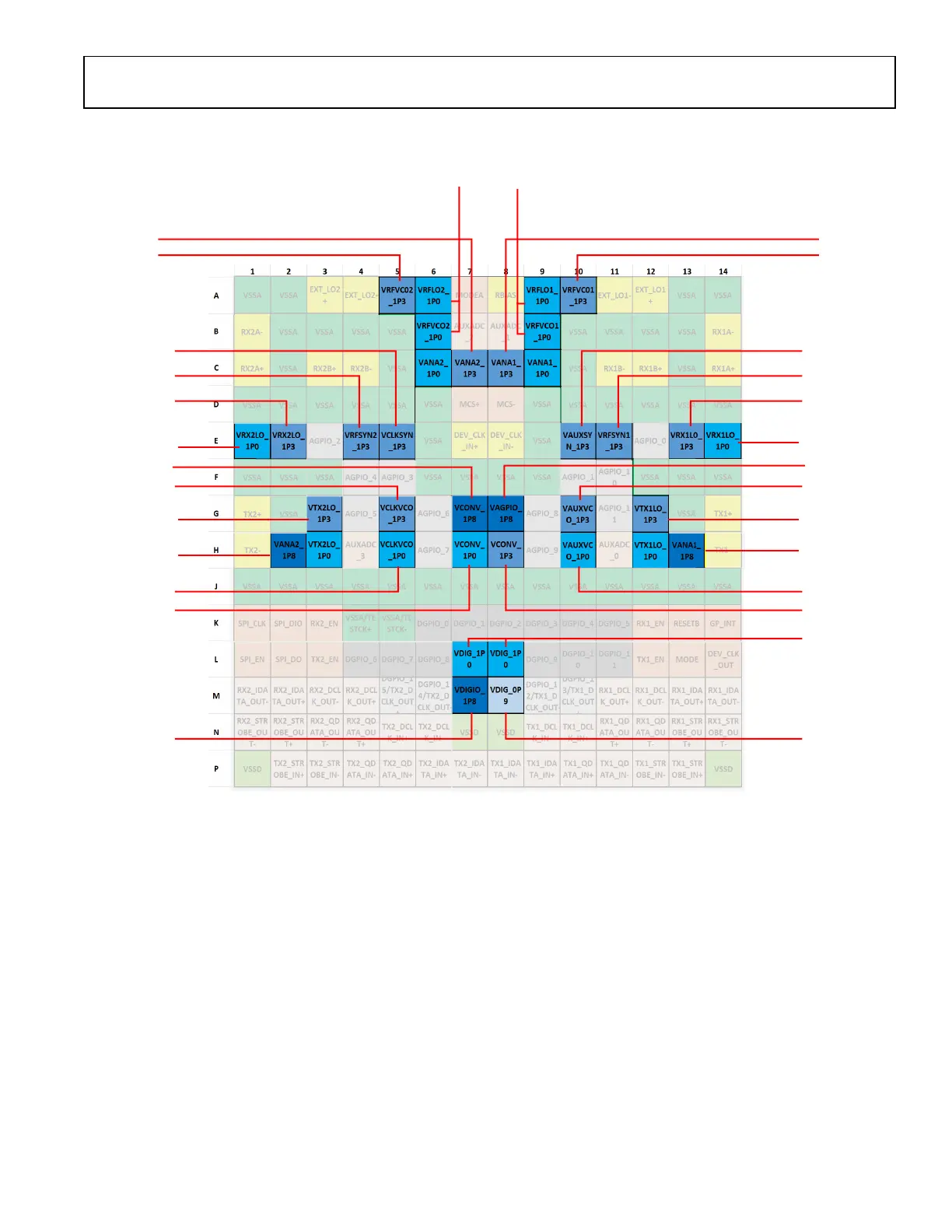Preliminary Technical Data UG-1828
Rev. PrB | Page 257 of 277
By selecting the Automatic radio button in Gain Control Mode, the user can configure basic ADRV9001 internal AGC parameters. The
AGC becomes operational and automatically adjusts the receiver gain level when the ADRV9001 starts to receive data in the Receive tab.
See the Receiver Gain Control section for more information about AGC operation.
The user also has the ability to select Correction or Compensation for Gain Compensation operation.
• Compensation: the process of compensating for the analog attenuation in the device (prior to the ADC) with a corresponding
amount of digital gain before the digital signal is sent to the user. Gain compensation uses the digital gain to effectively undo analog
gain so from receiver data recipient signal stays constant. The digital gain is effectively compensating for the analog attenuation.
• Correction: the process of correction uses digital gain to make the gain steps more accurate. This is to ensure receiver gain steps are
accurate.
Filters
ADRV9001 evaluation software allows users to specify their own custom programmable filter for the receiver. This filter is up to 128 taps. The
custom filter must be in the format of csv or txt file and coefficients must be 24-bit signed integers with no carriage returns. An example
filter .txt file is provided in the SDK . There is also the option to bypass this filter entirely.
GPIO Configuration
Receiver Gain Control
DGPIOs on the evaluation board from DGPIO_0 to DGPIO_11 can be used for feedback signals as well as setting gain index for receiver
gain control (see Figure 251).
Figure 252. Rx Gain Control Tab

